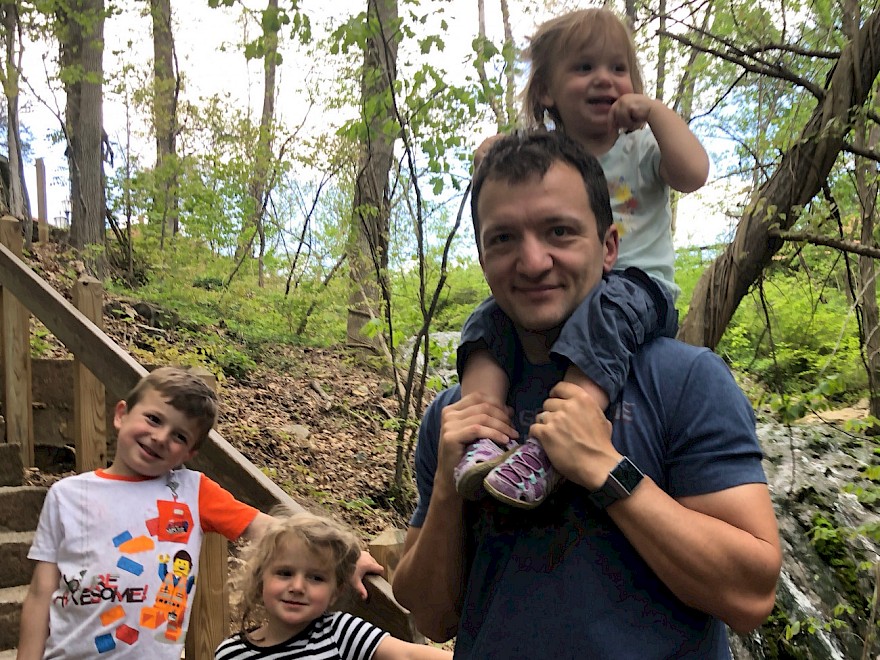Gregory Vorona MD

Gregory (“Greg”) Vorona MD
Professional Title: Assistant Professor of Radiology.
Locale: The Children’s Hospital of Richmond at Virginia Commonwealth University.
Fellowships: Pediatric Radiology (CHOP), Pediatric Neuroradiology (CHOP).
ASPNR member since 2014.
ASPNR: What attracted you to pediatric neuroradiology?
Greg Vorona: As a radiology resident, my favorite rotations were neuroradiology and pediatric radiology. The pediatric radiologists and pediatric neuroradiologists that I worked with were very passionate about their jobs, and they all seemed happy with their career choices. They also came across as a fun and enthusiastic group of people to work with. I also really liked the culture of pediatric radiology, being able to work with children and their families. Pediatric neuroradiology was a way to blend it all together.
ASPNR: Do you have a colleague or mentor that inspired you in your career?
GV: As a radiology resident, I rotated through the Children’s Hospital of Pittsburgh for peds. That’s where I got to work with Dr. Ashok Panigrahy and Dr. Giulio Zuccoli. They both inspired my interest in pediatric neuroradiology. As a fellow at CHOP, I trained under outstanding pediatric radiologists and pediatric neuroradiologists and I am very grateful to all of them.
ASPNR: How are the radiologists at your hospital working under the COVID-19 pandemic? Are they working on site or remotely?
GV: Both. We have radiologists working on-site and others working remotely from home.
ASPNR: How has COVID-19 affected teaching?
GV: Some trainees are now located in separate reading rooms from staff. We use Microsoft Teams for read out with them. With a few clicks, we can share the desktop and communicate with the residents and fellows through the Dictaphone. While it’s a good temporizing solution, something is lost without the direct interaction. Our teaching conferences are now also virtual, which compounds the matter.
ASPNR: Do you think this change in teaching methods will impact trainees in the long-term?
GV: I think it probably depends in part on the trainee. I’ve noticed that some trainees are flourishing with remote read-outs, while others need a higher level of engagement. In general, I think trainees are quite resourceful.
ASPNR: How has COVID-19 impacted your career trajectory?
GV: I’m not sure – time will tell I suppose.
ASPNR: What is the most interesting project you are working on right now?
GV: We are working on ideas that simulate the radiology environment using virtual reality to familiarize children with the department and prepare them for their visit. Jonathan Ashmore and his group in the NHS (Scotland) have developed this idea by creating a VR experience for children in the MRI magnet – they provide it free to the public (video below). The Ashmore group’s innovative work was showcased at the ASPNR 2020 Miami meeting in the exhibitor’s hall. I think VR is an underrecognized resource that we can use to mitigate anxiety in children undergoing imaging exams and we are looking at ways to best develop and implement this.
ASPNR: Name a helpful online resource that your colleagues may not be aware of.
GV: Elsevier makes an anatomy app called “Complete Anatomy” which is very useful, especially for reviewing anatomy with trainees. I use it on my iPad. It also has an augmented reality feature which is fun to play with- my kids have entertained themselves (and me) by placing anatomically-correct and life-sized virtual skeletons around our house. It’s only $35/year if you are a trainee and you can trial it for free.
ASPNR: What was your childhood dream job?
GV: I wanted to design video games.
ASPNR: What is one thing people would be surprised to know about you?
GV: I have a small collection of vintage Star Wars toys, and I keep some of them in my office at work.
ASPNR: Will you be attending the 3rd Annual ASPNR Meeting -Virtual- on January 9, 2021?
GV: Yes – absolutely!
November 21, 2020